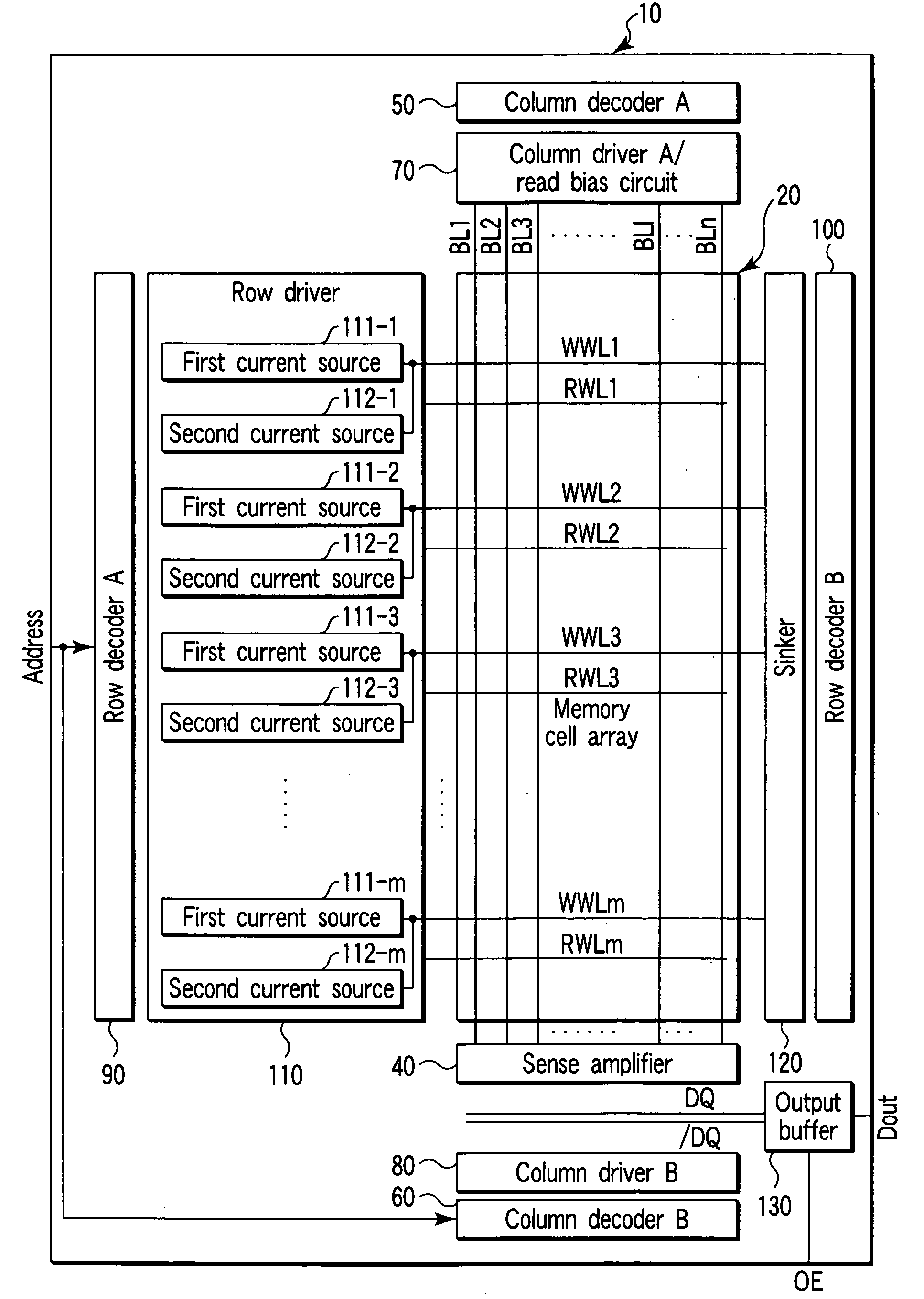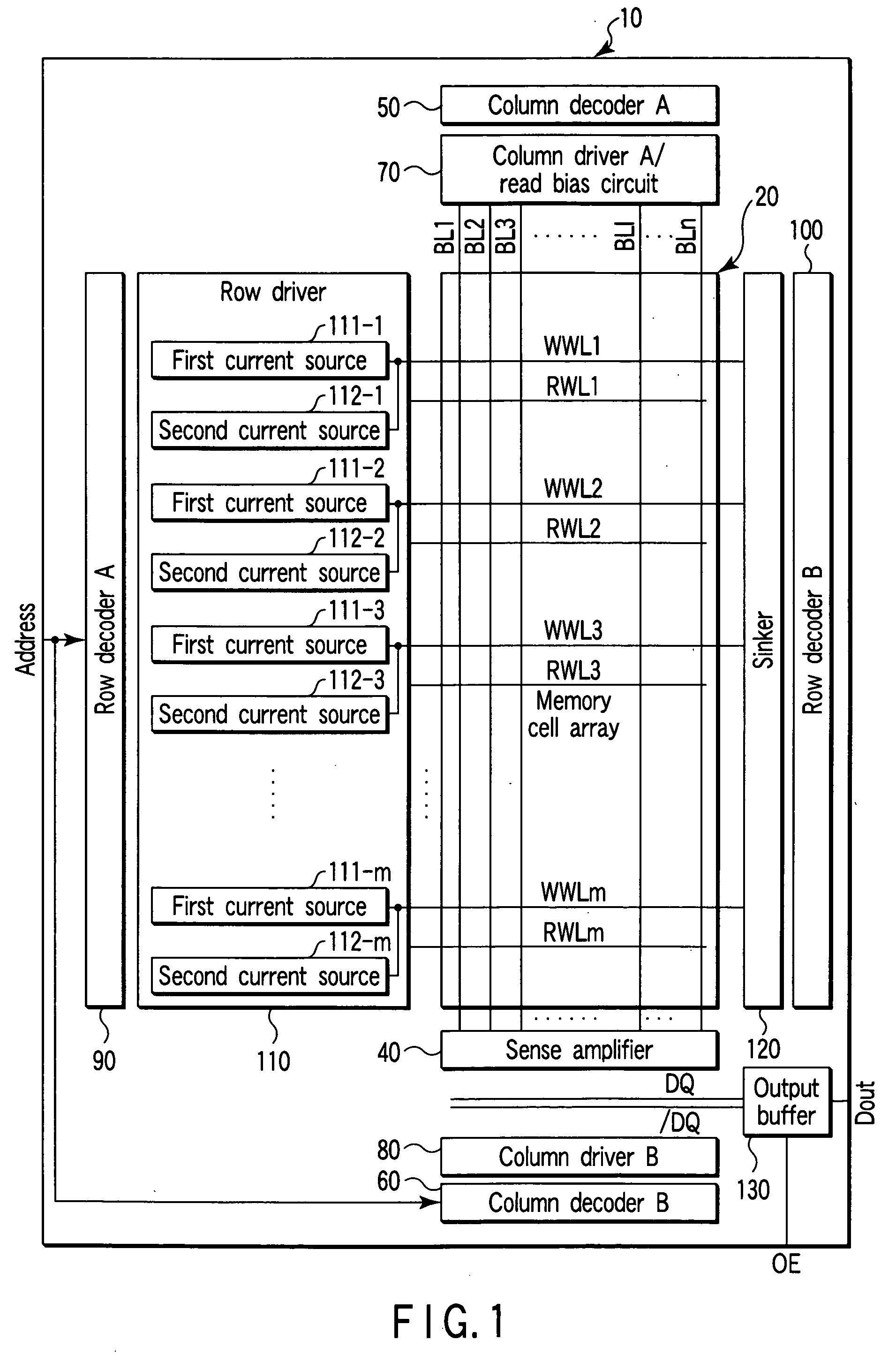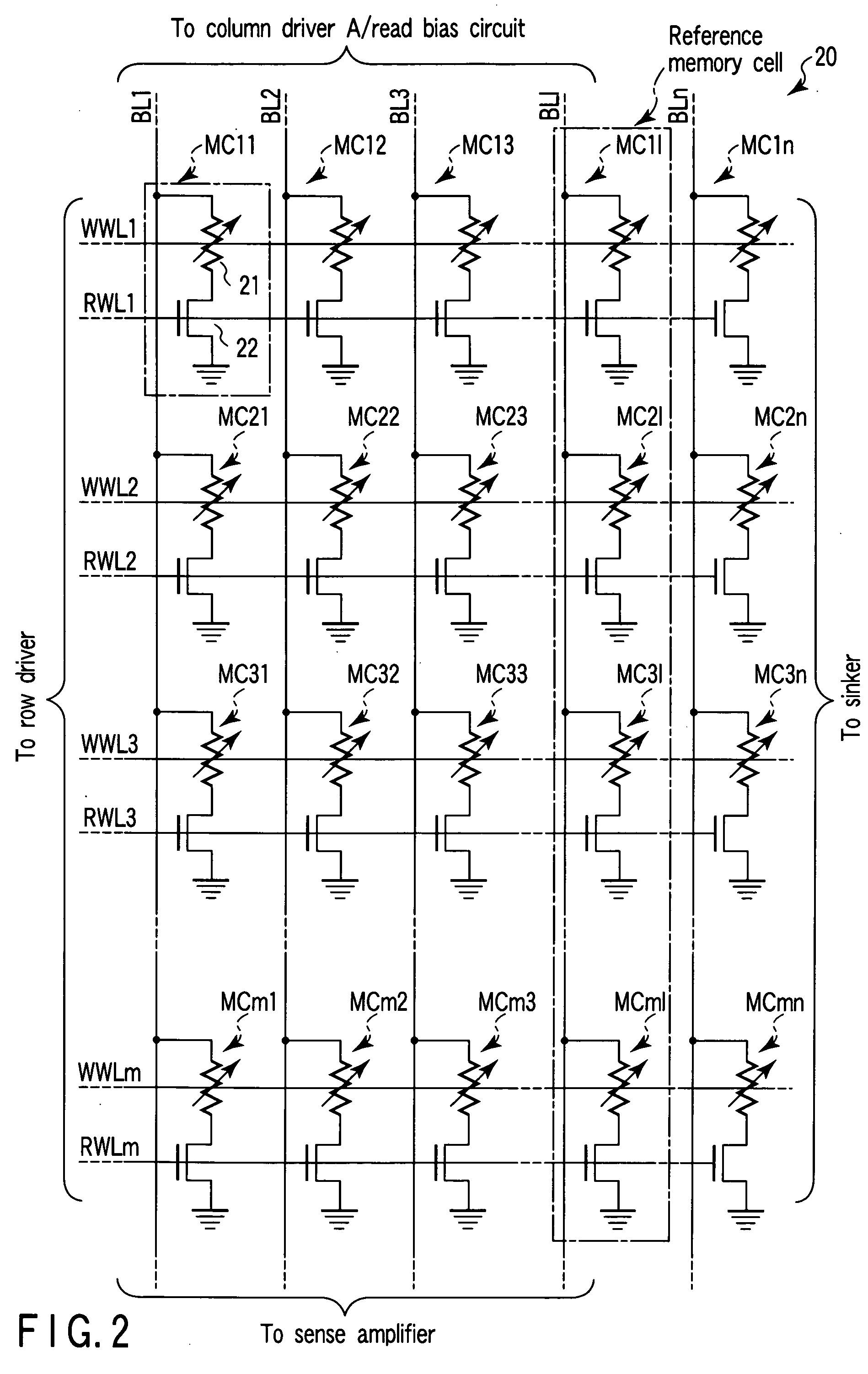Semiconductor memory device including reference memory cell and control method
a memory cell and memory technology, applied in semiconductor devices, digital storage, instruments, etc., can solve the problems of uncertainty in the reliability of reference signals, methods that are sometimes unsuitable for memory cell arrays,
- Summary
- Abstract
- Description
- Claims
- Application Information
AI Technical Summary
Benefits of technology
Problems solved by technology
Method used
Image
Examples
first embodiment
[0042]A semiconductor memory device according to the present invention will be described with reference to FIG. 1. FIG. 1 is a block diagram of MRAM according to the present embodiment.
[0043]As shown, a MRAM 10 includes a memory cell array 20, sense amplifier 40, column decoder A 50, column decoder B 60, column driver A / read bias circuit 70, column driver B 80, row decoder A 90, row decoder B 100, row driver 110, sinker 120, and output buffer 130.
[0044]In the memory cell array 20, write word lines WWL1 to WWLm (m: natural number) and read word lines RWL1 to RWLm are formed along a predetermined direction (first direction), and bit lines BL1 to BLn (n: natural number) are formed along a direction (second direction) crossing at right angles to the first direction. One end of the write word lines WWL1 to WWLm and read word lines RWL1 to RWLm is connected to the row driver 110, and the other end of the write word lines WWL1 to WWLm is connected to the sinker 120. Moreover, one end of th...
second embodiment
[0109]The semiconductor memory device according to the invention will be described with reference to FIG. 9. FIG. 9 is a block diagram of the MRAM according to the present embodiment.
[0110]As FIG. 9 shows, this MRAM is identical to the first embodiment illustrated in FIG. 1, except that it comprises a control circuit 140 and fuse group 150. The components other than the circuit 140 and fuse group 150 will not described.
[0111]The control circuit 140 and fuse group 150 will be described, together with a method of generating reference signals, with reference to FIG. 10. FIG. 10 is a flowchart explaining the method of generating reference signals.
[0112]First, a semiconductor chip has been manufactured (step S1), the die sort test (step S2) is performed. At the die sort time, as described above in the first embodiment, the data is written in the reference memory cells MC1l to MCml (step S3). That is, the method comprises: adjusting the value of the write current Iw1 supplied to the write...
PUM
 Login to View More
Login to View More Abstract
Description
Claims
Application Information
 Login to View More
Login to View More - R&D
- Intellectual Property
- Life Sciences
- Materials
- Tech Scout
- Unparalleled Data Quality
- Higher Quality Content
- 60% Fewer Hallucinations
Browse by: Latest US Patents, China's latest patents, Technical Efficacy Thesaurus, Application Domain, Technology Topic, Popular Technical Reports.
© 2025 PatSnap. All rights reserved.Legal|Privacy policy|Modern Slavery Act Transparency Statement|Sitemap|About US| Contact US: help@patsnap.com



